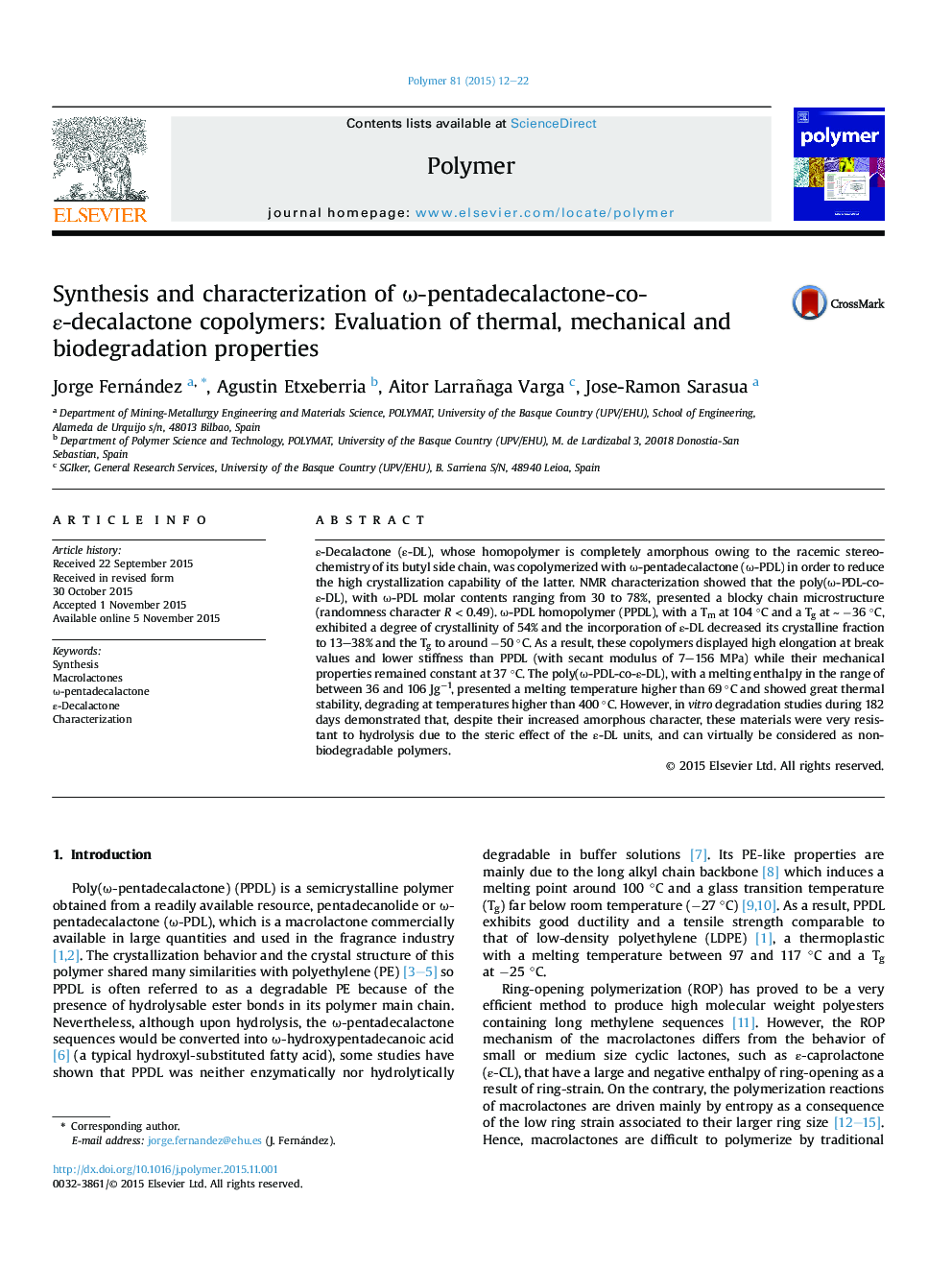| کد مقاله | کد نشریه | سال انتشار | مقاله انگلیسی | نسخه تمام متن |
|---|---|---|---|---|
| 5179711 | 1502525 | 2015 | 11 صفحه PDF | دانلود رایگان |

- ε-Decalactone was copolymerized with Ï-pentadecalactone to reduce the high crystallization capability of the latter.
- Poly(Ï-PDL-co-ε-DL)s were carefully characterized by NMR, GPC, DSC, WAXS and TGA measurements.
- Their mechanical properties were tested at room temperature (21 °C) and at body temperature (37 °C).
- An in vitro degradation study was also carried out at 37 °C for 182 days.
ε-Decalactone (ε-DL), whose homopolymer is completely amorphous owing to the racemic stereochemistry of its butyl side chain, was copolymerized with Ï-pentadecalactone (Ï-PDL) in order to reduce the high crystallization capability of the latter. NMR characterization showed that the poly(Ï-PDL-co-ε-DL), with Ï-PDL molar contents ranging from 30 to 78%, presented a blocky chain microstructure (randomness character R < 0.49). Ï-PDL homopolymer (PPDL), with a Tm at 104 °C and a Tg at â¼Â â36 °C, exhibited a degree of crystallinity of 54% and the incorporation of ε-DL decreased its crystalline fraction to 13-38% and the Tg to around â50 °C. As a result, these copolymers displayed high elongation at break values and lower stiffness than PPDL (with secant modulus of 7-156 MPa) while their mechanical properties remained constant at 37 °C. The poly(Ï-PDL-co-ε-DL), with a melting enthalpy in the range of between 36 and 106 Jgâ1, presented a melting temperature higher than 69 °C and showed great thermal stability, degrading at temperatures higher than 400 °C. However, in vitro degradation studies during 182 days demonstrated that, despite their increased amorphous character, these materials were very resistant to hydrolysis due to the steric effect of the ε-DL units, and can virtually be considered as non-biodegradable polymers.
Journal: Polymer - Volume 81, 16 December 2015, Pages 12-22